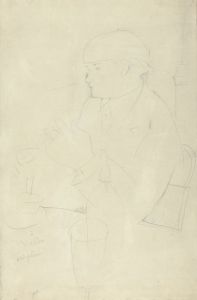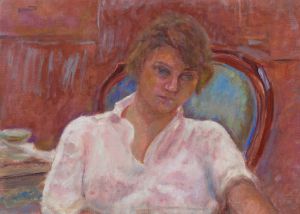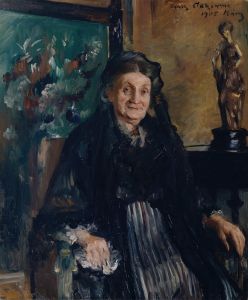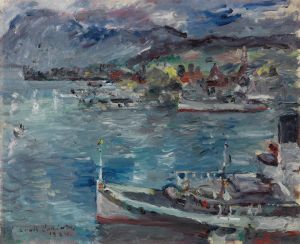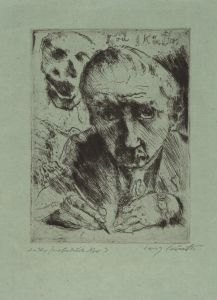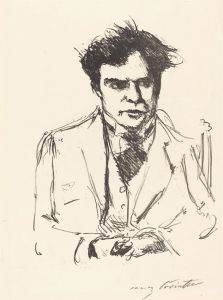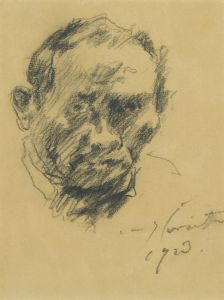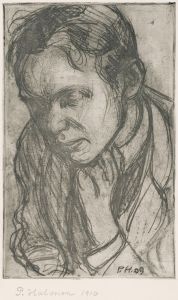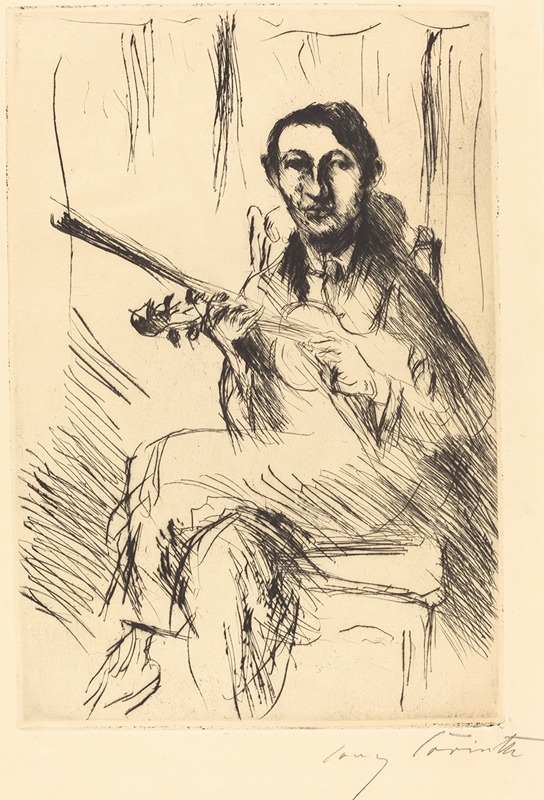
Andreas Weissgaerber-I
A hand-painted replica of Lovis Corinth’s masterpiece Andreas Weissgaerber-I, meticulously crafted by professional artists to capture the true essence of the original. Each piece is created with museum-quality canvas and rare mineral pigments, carefully painted by experienced artists with delicate brushstrokes and rich, layered colors to perfectly recreate the texture of the original artwork. Unlike machine-printed reproductions, this hand-painted version brings the painting to life, infused with the artist’s emotions and skill in every stroke. Whether for personal collection or home decoration, it instantly elevates the artistic atmosphere of any space.
Lovis Corinth was a German painter and printmaker whose work is associated with the transition from Impressionism to Expressionism in German art. Born on July 21, 1858, in Tapiau, East Prussia, Corinth became one of the leading figures in the Berlin Secession, a group of artists who broke away from the traditional art institutions in Germany at the turn of the 20th century. His work is characterized by a vigorous brushstroke and a vibrant use of color, often exploring themes of mythology, portraits, landscapes, and still lifes.
One of Corinth's notable works is "Andreas Weissgaerber-I," a portrait painting that exemplifies his mature style. This painting is part of Corinth's extensive body of portraiture, which includes depictions of family members, friends, and notable figures of his time. Portraits were a significant aspect of Corinth's oeuvre, allowing him to explore the character and personality of his subjects through expressive brushwork and a keen eye for detail.
"Andreas Weissgaerber-I" captures the likeness of its subject with a dynamic composition and a rich palette. Corinth's approach to portraiture often involved a balance between realism and expressionism, capturing not just the physical appearance but also the psychological depth of the sitter. His portraits are noted for their ability to convey the inner life of the subject, often through the use of bold colors and energetic brushstrokes.
The painting reflects Corinth's mastery in handling paint, with a surface that is both textured and fluid. This technique allows the viewer to engage with the painting on multiple levels, appreciating both the likeness of the subject and the abstract qualities of the paint itself. Corinth's portraits are often celebrated for their ability to convey a sense of immediacy and presence, drawing the viewer into a direct encounter with the subject.
Throughout his career, Corinth's style evolved significantly. Early in his career, he was influenced by the Impressionists, but as he matured, his work took on a more expressionistic quality. This evolution is evident in "Andreas Weissgaerber-I," where the brushwork becomes more pronounced and the colors more vivid, reflecting the emotional intensity that characterizes much of his later work.
Corinth's contribution to art extends beyond his paintings. He was also a prolific printmaker and a teacher, influencing a generation of artists through his work and his role in the Berlin Secession. His legacy is marked by his ability to bridge different artistic movements and his commitment to exploring the human condition through art.
"Andreas Weissgaerber-I" remains an important work within Corinth's oeuvre, showcasing his skill as a portraitist and his ability to capture the essence of his subjects. The painting is a testament to Corinth's artistic vision and his place within the broader context of German art history.






